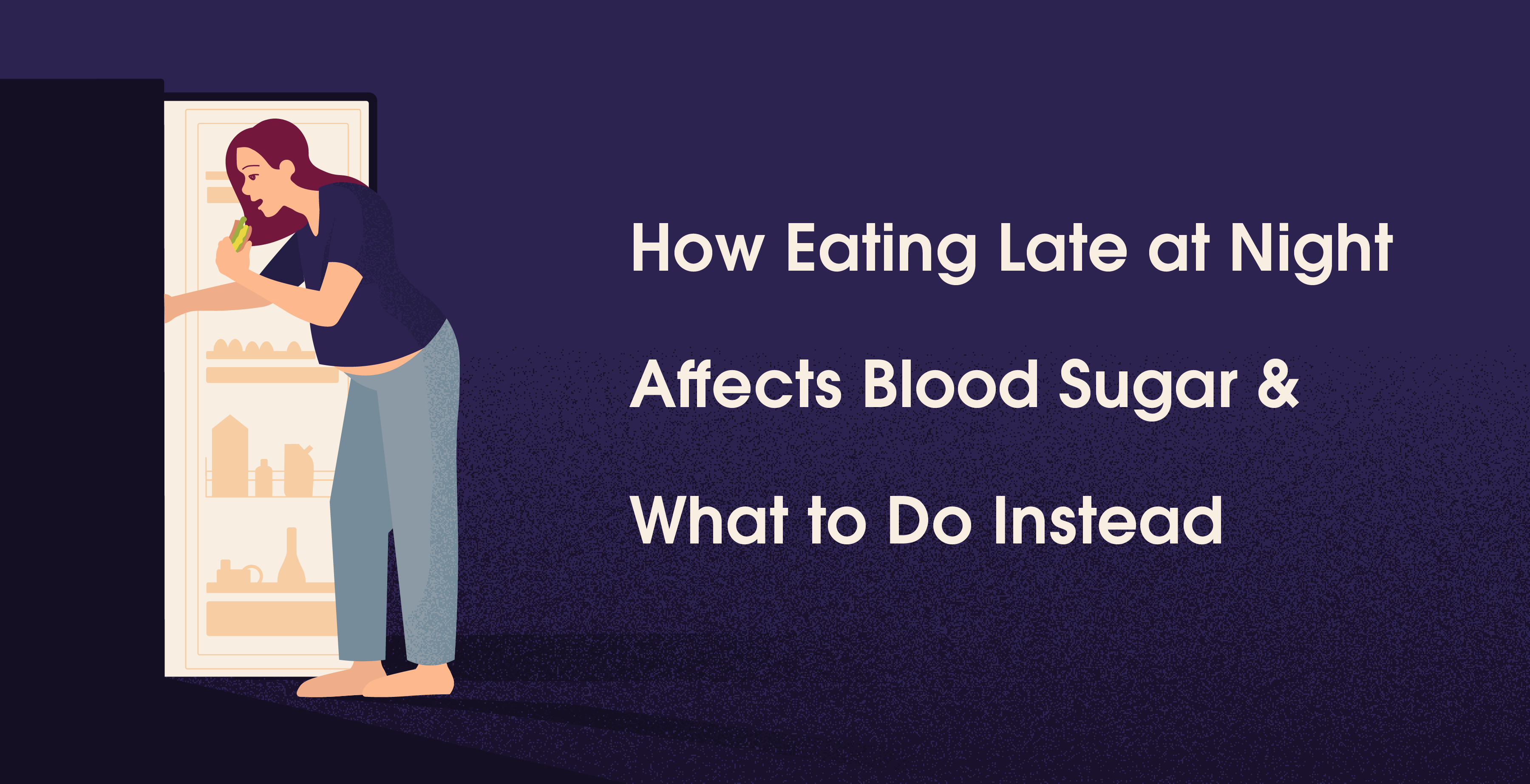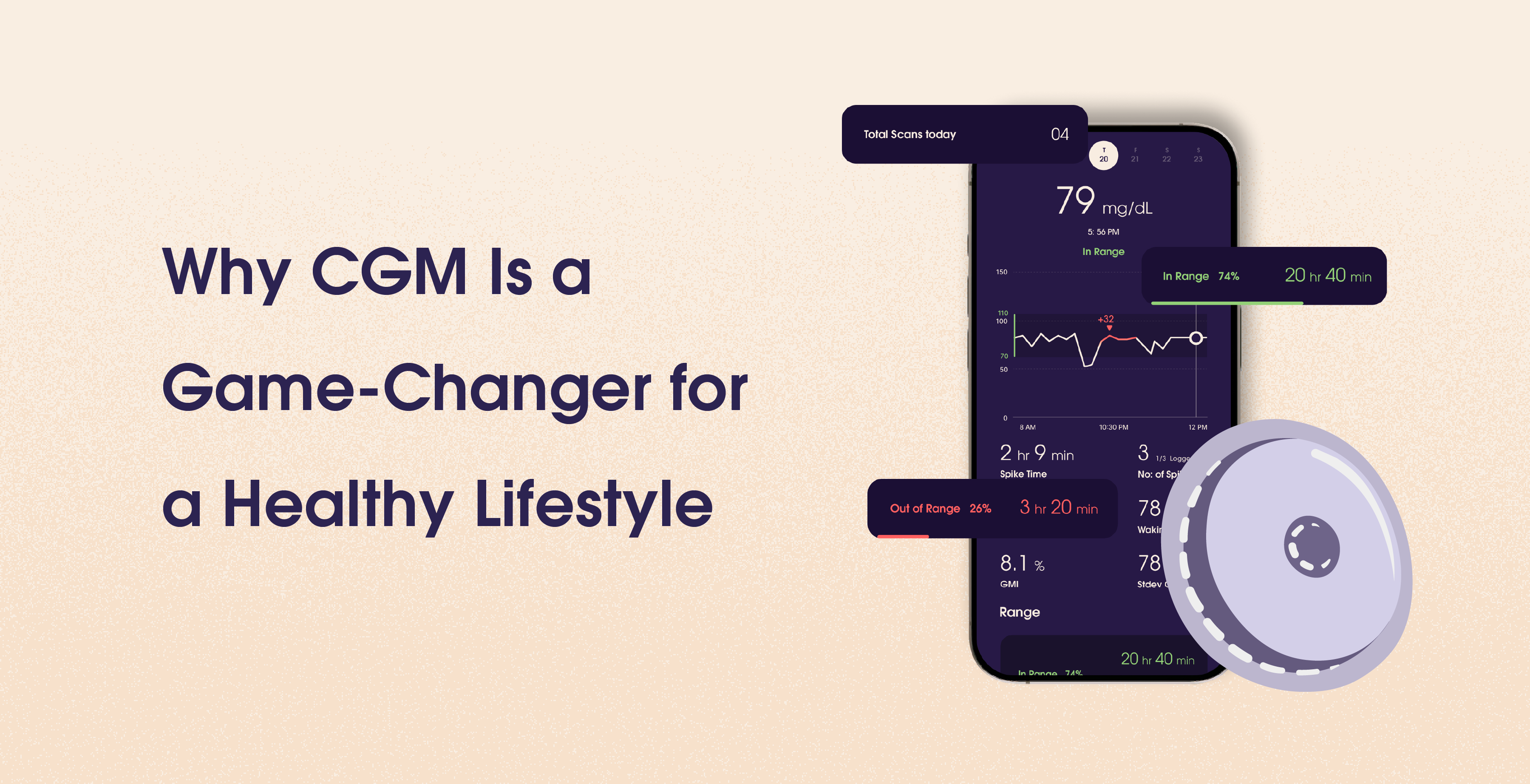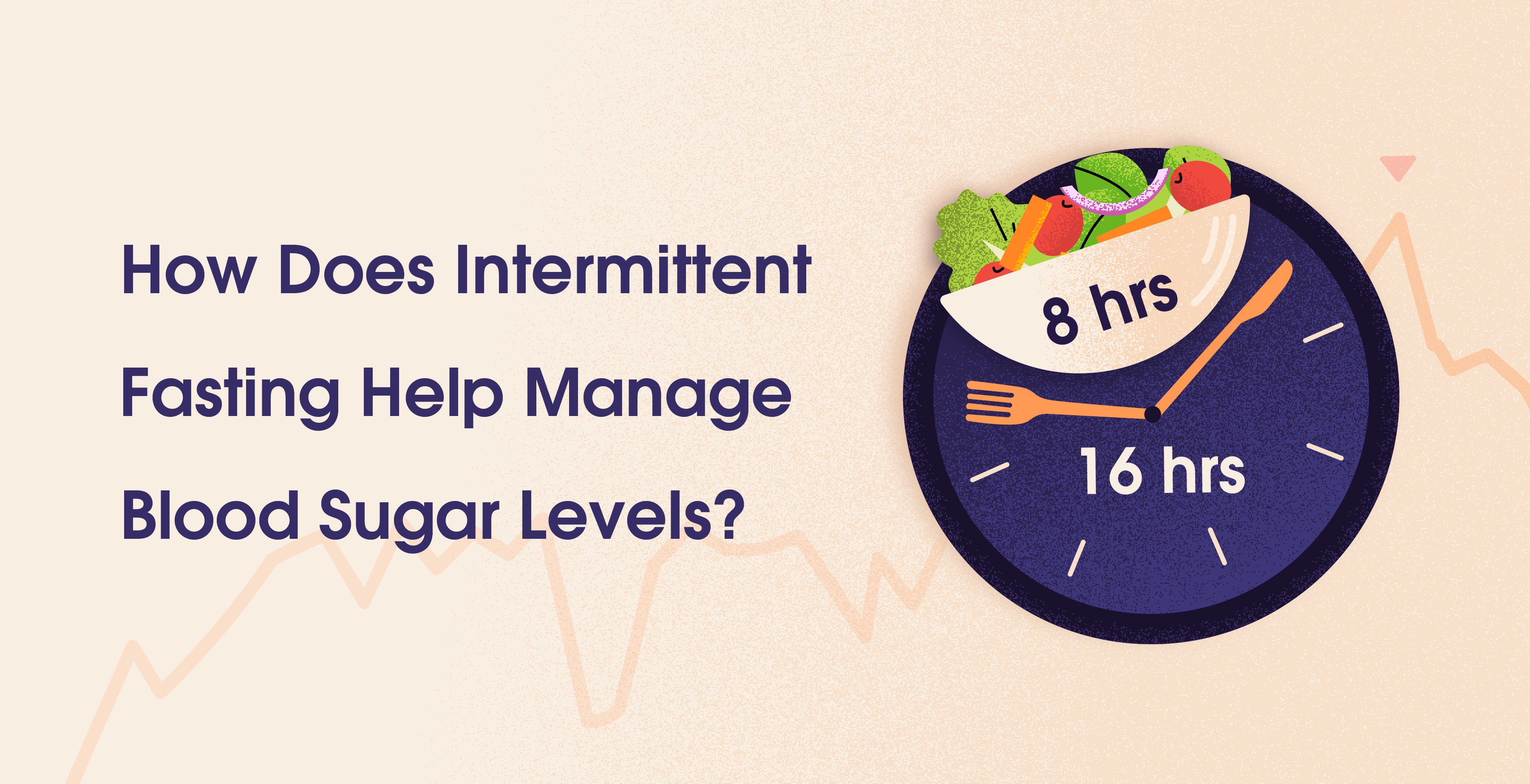The Right Way to Do Desserts: Lunch, Walks & ACV
Mar 20, 2024
Ashima Raizada



Table Of Contents
When it comes to food, it's all about finding balance. You might think that having diabetes means you have to skip all the good stuff, especially sugar, right? Well, it turns out that's not necessarily true! We were pretty skeptical too, until we looked into it. Just a heads up, though: make sure to chat with your doctor before you try mixing things up with your food.
Highlights
Eating vegetables before proteins and carbs can stabilize blood sugar levels
Sugar after a fiber and protein-rich lunch can improve energy and insulin sensitivity
A brisk walk after dessert helps lower post-meal blood glucose
Apple cider vinegar in water before meals can improve blood sugar control
A holistic approach to diabetes includes a balanced diet, exercise, and lifestyle adjustments
Food Order
For years, the mantra from health experts and doctors has been all about the what and the when of eating. Fast forward to now, and the spotlight's shifting to an intriguing aspect: the sequence in which we eat. Turns out, a simple mix-up in the order of your meals could be a game-changer, particularly for balancing blood sugar levels.
Now, research from Weill Cornell Medical College, freshly served in the Diabetes Care journal throws a curveball in managing type 2 diabetes by highlighting that the order of food intake is key. By prioritizing veggies (fiber) first, followed by proteins and fats, and then carbs plus sugars, participants saw their post-meal blood sugar and insulin levels significantly stabilize. Fiber and protein slow the absorption of sugar into the bloodstream, preventing sharp spikes in blood sugar levels. This gradual absorption helps maintain steady energy levels and prevents the rapid insulin surges that can lead to insulin resistance over time.
Dessert After Lunch
Midday Metabolic Advantage
During the middle of the day, your metabolism is typically more active compared to the evening. This means your body is better equipped to handle the gradual increase in blood sugar that comes from consuming sugar after a fiber and protein-heavy meal.
Energy Sustenance
A lunch that balances fiber, protein, and a controlled portion of sugar can help maintain steady energy levels throughout the afternoon, preventing the midday slump that often leads to reaching for high-sugar snacks.
Improved Insulin Sensitivity
Insulin sensitivity tends to be higher earlier in the day. Eating sugar after a balanced lunch takes advantage of this physiological state, allowing for better blood glucose control compared to consuming sugar later when insulin sensitivity can decrease.
Strategic Satiety and Cravings Control
A satisfying lunch with a sweet note at the end can curb afternoon cravings effectively. Since you're already full of fiber and protein, the added sugar won't lead to overeating but will satisfy a sweet tooth, making it easier to avoid unhealthy snacking before dinner.
Optimized Nutrient Utilization
Post-lunch, your body is still in an active state, optimizing the absorption and utilization of nutrients from both the meal and the sugar consumed afterward. This can contribute to overall better glucose management and nutrient intake.
By timing the consumption of sugar after a nutrient-rich lunch, you leverage natural metabolic rhythms, support sustained energy levels, and enhance overall dietary satisfaction, all of which are crucial for managing blood sugar levels and reducing the risk of diabetes-related complications.
Walk It Off: The Step-by-Step Approach
Pairing your post-lunch dessert with a walk is a powerful combination for managing blood sugar levels. Walking after meals, especially a brisk 10 to 15-minute walk, can help lower post-meal blood glucose levels. This activity stimulates muscle cells to absorb glucose, using it for energy, which in turn reduces the amount circulating in your bloodstream.
Walking not only aids in glucose management but also supports overall health by improving cardiovascular health, aiding weight management, and enhancing mental well-being. It's a simple, effective, and enjoyable way to counterbalance dessert indulgence and keep your blood sugar in check.
ACV: A Tangy Twist to Blood Sugar Management
Incorporating apple cider vinegar into your routine can offer additional support in managing blood sugar levels. ACV has been shown to have a modest effect on improving insulin sensitivity and reducing blood sugar spikes after meals. A tablespoon of apple cider vinegar in a tall glass of water before meals.
However, it's important to approach ACV with caution, especially for those with diabetes. Consuming it diluted in water or as part of a dressing is recommended to avoid throat irritation or damage to tooth enamel. Always consult with a healthcare provider before adding ACV to your diet, particularly if you're on medications or have existing health conditions.
A Balanced Approach
Managing diabetes requires a holistic approach that balances diet, activity, and lifestyle modifications. Enjoying dessert after lunch, coupled with a post-meal walk and incorporating ACV, can be part of a comprehensive strategy for controlling blood sugar levels. It's about finding joy in the little things while keeping health and well-being at the forefront.
Remember, individual responses to foods and activities can vary, so it's essential to monitor your blood sugar levels and consult with healthcare professionals to tailor these suggestions to your specific needs. With the right approach, diabetes management can include the sweetness of desserts and the enriching experiences of everyday life.
References
When it comes to food, it's all about finding balance. You might think that having diabetes means you have to skip all the good stuff, especially sugar, right? Well, it turns out that's not necessarily true! We were pretty skeptical too, until we looked into it. Just a heads up, though: make sure to chat with your doctor before you try mixing things up with your food.
Highlights
Eating vegetables before proteins and carbs can stabilize blood sugar levels
Sugar after a fiber and protein-rich lunch can improve energy and insulin sensitivity
A brisk walk after dessert helps lower post-meal blood glucose
Apple cider vinegar in water before meals can improve blood sugar control
A holistic approach to diabetes includes a balanced diet, exercise, and lifestyle adjustments
Food Order
For years, the mantra from health experts and doctors has been all about the what and the when of eating. Fast forward to now, and the spotlight's shifting to an intriguing aspect: the sequence in which we eat. Turns out, a simple mix-up in the order of your meals could be a game-changer, particularly for balancing blood sugar levels.
Now, research from Weill Cornell Medical College, freshly served in the Diabetes Care journal throws a curveball in managing type 2 diabetes by highlighting that the order of food intake is key. By prioritizing veggies (fiber) first, followed by proteins and fats, and then carbs plus sugars, participants saw their post-meal blood sugar and insulin levels significantly stabilize. Fiber and protein slow the absorption of sugar into the bloodstream, preventing sharp spikes in blood sugar levels. This gradual absorption helps maintain steady energy levels and prevents the rapid insulin surges that can lead to insulin resistance over time.
Dessert After Lunch
Midday Metabolic Advantage
During the middle of the day, your metabolism is typically more active compared to the evening. This means your body is better equipped to handle the gradual increase in blood sugar that comes from consuming sugar after a fiber and protein-heavy meal.
Energy Sustenance
A lunch that balances fiber, protein, and a controlled portion of sugar can help maintain steady energy levels throughout the afternoon, preventing the midday slump that often leads to reaching for high-sugar snacks.
Improved Insulin Sensitivity
Insulin sensitivity tends to be higher earlier in the day. Eating sugar after a balanced lunch takes advantage of this physiological state, allowing for better blood glucose control compared to consuming sugar later when insulin sensitivity can decrease.
Strategic Satiety and Cravings Control
A satisfying lunch with a sweet note at the end can curb afternoon cravings effectively. Since you're already full of fiber and protein, the added sugar won't lead to overeating but will satisfy a sweet tooth, making it easier to avoid unhealthy snacking before dinner.
Optimized Nutrient Utilization
Post-lunch, your body is still in an active state, optimizing the absorption and utilization of nutrients from both the meal and the sugar consumed afterward. This can contribute to overall better glucose management and nutrient intake.
By timing the consumption of sugar after a nutrient-rich lunch, you leverage natural metabolic rhythms, support sustained energy levels, and enhance overall dietary satisfaction, all of which are crucial for managing blood sugar levels and reducing the risk of diabetes-related complications.
Walk It Off: The Step-by-Step Approach
Pairing your post-lunch dessert with a walk is a powerful combination for managing blood sugar levels. Walking after meals, especially a brisk 10 to 15-minute walk, can help lower post-meal blood glucose levels. This activity stimulates muscle cells to absorb glucose, using it for energy, which in turn reduces the amount circulating in your bloodstream.
Walking not only aids in glucose management but also supports overall health by improving cardiovascular health, aiding weight management, and enhancing mental well-being. It's a simple, effective, and enjoyable way to counterbalance dessert indulgence and keep your blood sugar in check.
ACV: A Tangy Twist to Blood Sugar Management
Incorporating apple cider vinegar into your routine can offer additional support in managing blood sugar levels. ACV has been shown to have a modest effect on improving insulin sensitivity and reducing blood sugar spikes after meals. A tablespoon of apple cider vinegar in a tall glass of water before meals.
However, it's important to approach ACV with caution, especially for those with diabetes. Consuming it diluted in water or as part of a dressing is recommended to avoid throat irritation or damage to tooth enamel. Always consult with a healthcare provider before adding ACV to your diet, particularly if you're on medications or have existing health conditions.
A Balanced Approach
Managing diabetes requires a holistic approach that balances diet, activity, and lifestyle modifications. Enjoying dessert after lunch, coupled with a post-meal walk and incorporating ACV, can be part of a comprehensive strategy for controlling blood sugar levels. It's about finding joy in the little things while keeping health and well-being at the forefront.
Remember, individual responses to foods and activities can vary, so it's essential to monitor your blood sugar levels and consult with healthcare professionals to tailor these suggestions to your specific needs. With the right approach, diabetes management can include the sweetness of desserts and the enriching experiences of everyday life.
References
Table Of Contents
Table Of Contents
Table Of Contents
Read More


Mar 25, 2025
Sayfali Rawlani


Mar 20, 2025
Sayfali Rawlani


Mar 6, 2025
Sayfali Rawlani



Company
Copyright © 2025 trst health. All right reserved.

